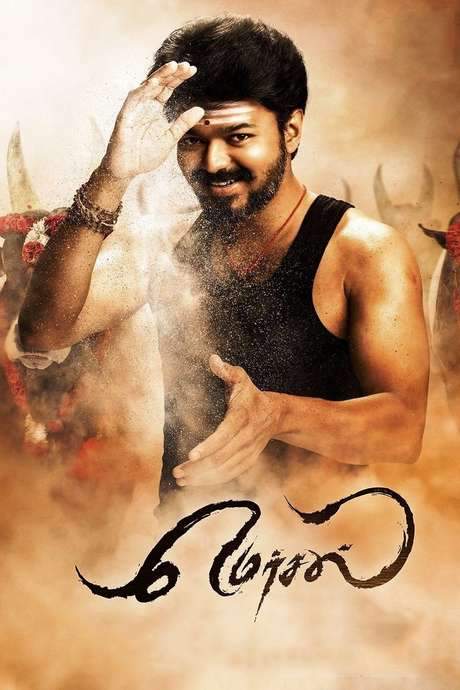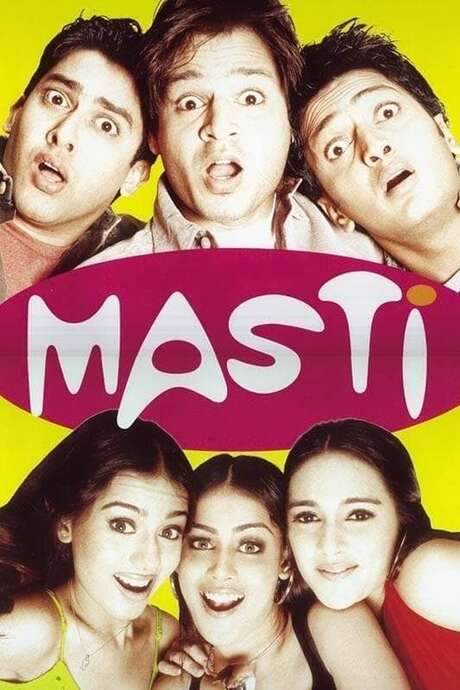
Magalir Mattum
Year: 1994
Runtime: 132 mins
Language: Tamil
In a workplace ruled by men, three women from different backgrounds unite to confront their predatory manager. As they expose his abuse of power, they rally each other and colleagues, turning personal defiance into a collective, bold feminist stand that challenges the entrenched hierarchy.
Warning: spoilers below!
Haven’t seen Magalir Mattum yet? This summary contains major spoilers. Bookmark the page, watch the movie, and come back for the full breakdown. If you're ready, scroll on and relive the story!
Magalir Mattum (1994) – Full Plot Summary & Ending Explained
Read the complete plot breakdown of Magalir Mattum (1994), including all key story events, major twists, and the ending explained in detail. Discover what really happened—and what it all means.
In a bustling fashion export house, two remarkable women hold the line between struggle and opportunity. Janaki Janaki is a shy Brahmin woman who supports her family as a diligent typist after her husband loses his factory job. She keeps her head down and does her work with quiet resolve. Pappamma Pappamma lives with her alcoholic rickshaw-puller husband and juggles two roles: she keeps the house together while also earning enough to cover both their needs and the man’s drinking expenses. Both women share the same company, the same anxieties, and a growing frustration with a manager who abuses his position. The main force behind their fear is Pandian, the head of the office from the head office, a married man who harasses female employees with alarming regularity. His misogynistic posture makes the workday a minefield, and the women endure it out of necessity and the hope of keeping their families afloat.
Into this tense climate steps Sathya, a fresh computer graduate who joins the company as a designer. With a mix of intelligence and charisma, Sathya’s presence instantly unsettles Pandian, who tries to draw her into a more personal relationship. At first, Sathya misreads the manager’s overtures as mere friendliness, and she accepts a dinner invitation in good faith. But her colleagues misinterpret the situation and ostracize her, strengthening Sathya’s resolve to see him clearly for what he is. When Pandian presents Sathya with a silk sari, she recognizes the real motive behind his gestures and rebukes him, earning the respect and budding friendship of Janaki and Pappamma. The trio’s bond grows as Sathya’s bold opinions and technical savvy begin to transform the office environment, much to Pandian’s chagrin. Among Pandian’s allies is Madhavi, his subordinate who eyes the evolving dynamic with a mix of ambition and resentment.
The plot takes a dangerous turn when Pandian asks Janaki to stay late and fetch him coffee. She unknowingly pours a cup infused with rat poison instead of sugar, and Pandian collapses. Sathya notices the incident and takes him to the hospital, where the team realizes that the danger came from poison, not a simple mishap. A crucial misunderstanding unfolds: Janaki believes Pandian drank poison, and the trio rush to tell Pappamma and Sathya. They soon learn that Pandian is alive, but the truth about what happened is tangled with hospital gossip about a terrorist patient who died after consuming cyanide. In a panic, the trio steals a covered corpse, assuming it is Pandian, and bring it to Sathya’s room. The grim error becomes a chaotic scramble, and after a hurried attempt to restore the body, they discover they have the terrorist’s corpse. They hurriedly return it to the hospital, and the police eventually take the body away, bringing a tense close to their adrenaline-fueled misadventure.
Back at work, Pandian reappears, and his power over the trio returns with a dangerous threat. He blackmails them into spending three nights with him in his office guesthouse, insisting that refusal would invite arrest. The trio initially accepts, but the moment they reach the guesthouse, they overpower Pandian, bind him, and lock him in a room. Sathya steps into the breach as acting manager, and with the active support of Janaki, Pappamma, and the rest of the staff, she begins to reform the office’s practices and culture. The office buzzes with a sense of possibility as the team implements more inclusive policies, challenges, and efficiencies that begin to turn the workplace around.
News of a boss’s visit from the head office looms, complicating matters: Pandian remains in a precarious state, and the trio must decide how to present their new reality. Meanwhile, Madhavi overhears the plan to hide Pandian’s misdeeds and somehow manages to rescue him, prompting a mad dash to the airport to greet the incoming head. The trio arrives at the airport only to discover that the boss has already left with Pandian, but they press on to the office, hoping to show their progress.
At the office, the boss is met with radical changes and a new sense of energy. Pandian, flustered, tries to deflect blame onto Sathya, Janaki, and Pappamma. Yet the boss has learned of Pandian’s misogyny through a spy he planted within the company, and he chooses to reward the trio for their courage and reform while removing Pandian and Madhavi from their old positions, sending them to Andaman. He also secures new opportunities for Janaki’s husband and Pappamma’s husband, offering them jobs appropriate to their circumstances, and he inquires about Sathya’s future. In a moment of symbolic revelation, Janaki shares a dream-like computer rendering of Sathya’s ideal husband, and the boss sees that the image resembles himself. The boss’s proposal to Sathya becomes a real possibility when he offers to marry her, a prospect she accepts, marking a dramatic shift in the company’s leadership and in Sathya’s life.
Thus, through a blend of courage, solidarity, and strategic reform, the women who began as routine employees rise to become the catalysts for significant changes within the office. The story threads together personal risk, professional growth, and a surprising union that reframes the workplace as a space where respect, equality, and opportunity can flourish, all guided by the resilient [Sathya], the steadfast [Janaki], and the determined [Pappamma], with the evolving partnership between the trio and the visionary leadership of the new Boss.
Last Updated: October 05, 2025 at 11:09
Unlock the Full Story of Magalir Mattum
Don't stop at just watching — explore Magalir Mattum in full detail. From the complete plot summary and scene-by-scene timeline to character breakdowns, thematic analysis, and a deep dive into the ending — every page helps you truly understand what Magalir Mattum is all about. Plus, discover what's next after the movie.
Magalir Mattum Timeline
Track the full timeline of Magalir Mattum with every major event arranged chronologically. Perfect for decoding non-linear storytelling, flashbacks, or parallel narratives with a clear scene-by-scene breakdown.

Similar Movies to Magalir Mattum
Discover movies like Magalir Mattum that share similar genres, themes, and storytelling elements. Whether you’re drawn to the atmosphere, character arcs, or plot structure, these curated recommendations will help you explore more films you’ll love.
Explore More About Movie Magalir Mattum
Magalir Mattum (1994) Scene-by-Scene Movie Timeline
Magalir Mattum (1994) Movie Characters, Themes & Settings
Magalir Mattum (1994) Spoiler-Free Summary & Key Flow
Movies Like Magalir Mattum – Similar Titles You’ll Enjoy
Ponmagal Vandhal (2020) Movie Recap & Themes
Magalir Mattum (2017) Spoiler-Packed Plot Recap
Mersal (2017) Full Movie Breakdown
Manmadhudu (2002) Complete Plot Breakdown
Masti (2004) Complete Plot Breakdown
Matrubhoomi: A Nation Without Women (2003) Ending Explained & Film Insights
24 Mani Neram (1984) Story Summary & Characters
Mattoral (1988) Ending Explained & Film Insights
Munthanai Mudichu (1983) Movie Recap & Themes
Mannan (1992) Detailed Story Recap
Adimakal Udamakal (1987) Plot Summary & Ending Explained
Mannar Mathai Speaking (1995) Ending Explained & Film Insights
Aval Appadithan (1978) Plot Summary & Ending Explained
Malai Malai (2009) Complete Plot Breakdown
Gaayathri (1977) Full Movie Breakdown

















